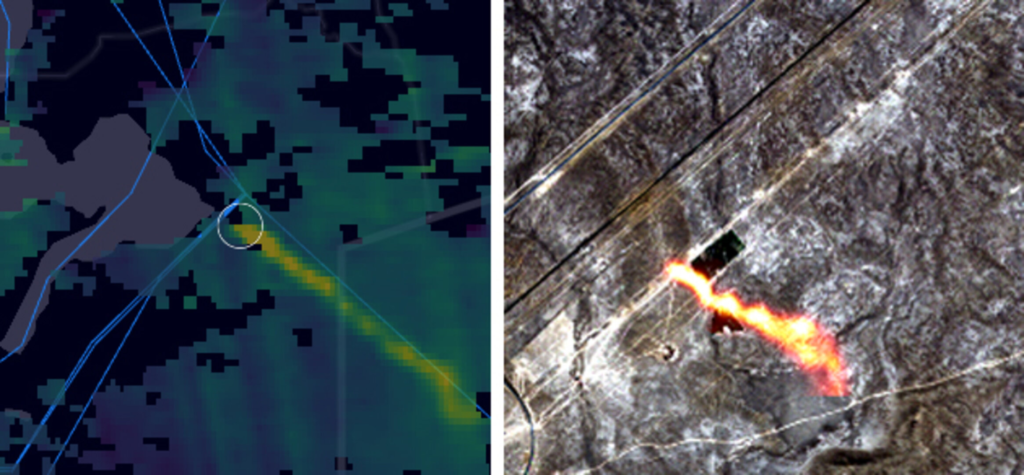How Space Technologies are Transforming the Oil and Gas Industry #2
The oil and gas industry is under growing pressure to enhance efficiency, ensure safety, and meet environmental regulations in the face of global challenges. Space technologies have emerged as game-changers, offering innovative tools that enable operators to address these demands effectively. From monitoring greenhouse gas emissions to detecting oil spills and methane leaks with precision, advanced satellite-based solutions are helping the industry optimize operations while reducing its environmental footprint.
1. IoT for Smart Energy Solutions by OQ Technology

OQ Technology is revolutionizing asset management and monitoring in the energy sector with its Internet of Things (IoT) solutions. By leveraging satellite-enabled IoT, oil and gas operators can maintain real-time oversight of crucial assets such as pipelines, oil rigs, and refinery equipment. OQ Technology’s Smart Energy solution supports predictive maintenance, leak detection, environmental monitoring, and worker safety tracking, ensuring peak efficiency and minimizing operational risks.
For instance, OQ Technology’s IoT applications allow remote SCADA (Supervisory Control and Data Acquisition) systems to monitor pipeline pressure, temperature, and potential leaks over vast, often inaccessible, areas. By transmitting data to a central hub, operators can respond swiftly to any anomalies, reducing downtime and preventing accidents. This technology is especially critical for assets situated in remote or offshore environments where cellular networks are unavailable, enabling seamless operations in areas beyond traditional connectivity.
2. GHG Monitoring for Methane and Carbon Emissions by Lyrasense

In response to regulatory and environmental pressures, the oil and gas industry must carefully monitor and mitigate greenhouse gas (GHG) emissions. Lyrasense has developed a solution to track emissions, particularly methane and carbon dioxide, across extensive areas and varied sources. By employing satellite-based remote sensing and AI-driven analytics, Lyrasense enables near real-time emissions monitoring, empowering companies to pinpoint leaks and take immediate corrective action.
With continuous monitoring, Lyrasense’s solution helps reduce the environmental footprint of oil and gas operations. The technology’s ability to localize emission sources accurately is invaluable for compliance with emission regulations, reducing both operational risk and environmental impact. Additionally, it enables proactive intervention strategies that are vital to sustainable operations and regulatory adherence in the face of tightening climate policies.
3. Methane Monitoring with High Spatial Resolution by Scanway Space

Scanway Space is developing an advanced optical instrument for detecting methane plumes with remarkable precision. Initially designed for deployment on a demonstration microsatellite, the technology aims to evolve into a global constellation of satellites capable of monitoring methane emissions in near real-time.
The instrument operates across the visible (VIS), near-infrared (NIR), and short-wave infrared (SWIR) bands, offering spectral resolution as fine as less than 1 nanometer and a spatial resolution (GSD) of 30 meters at 500 km altitude. This capability allows oil and gas companies to detect methane point sources with unparalleled accuracy, facilitating targeted interventions to reduce emissions and adhere to environmental regulations. The project represents a significant step forward in global methane monitoring infrastructure.
Conclusion
Space technologies are driving transformative changes in the oil and gas industry by improving environmental monitoring, enhancing safety, and supporting sustainable operations. Solutions like Lyrasense’s GHG monitoring, Orbital EOS’s oil spill detection, and the K3M methane detection system are equipping the industry with tools to address challenges while adhering to global sustainability goals. As these technologies continue to evolve, they will play an increasingly vital role in shaping the future of oil and gas operations.
Here is the previous article on the Space Technologies in Oil and Gas:


